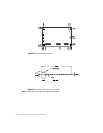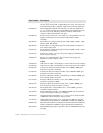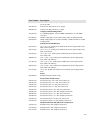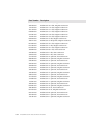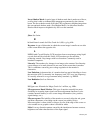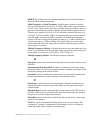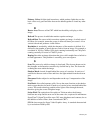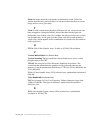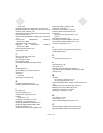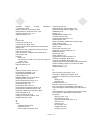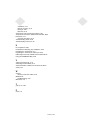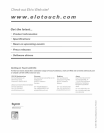Glossary-86 IntelliTouch/SecureTouch Guide
MPR-II-The radiation emission standard published by the Swedish National
Board for Measurement and testing.
Multi-Frequency vs Fixed Frequency-Fixed frequency monitors can only
sync on one horizontal scan rate (e.g. 31.5 kHz). Most of this type of monitors
are VGA only. There are two basic types of multi-frequency monitors: the tri or
quad sync multi-frequency monitor, and the variable multi-frequency monitor.
Tri/quad sync monitors will sync on 3 to 4 different horizontal scan rates (e.g.
31.5 kHz, 35.2 kHz, 48 kHz). Higher resolution/refresh rates can be achieved
from this higher horizontal scanning capability. A variable multi-frequency
monitor will have a range of horizontal scan rates (e.g. 31 kHz to 64 kHz) and
vertical scan rates (e.g. 50Hz to 90Hz). The monitor will sync on any input
signal which falls into these ranges. Most variable mullet-frequency monitors
are microprocessor based.
Multiple Frequency Monitor-A monitor that can be set at more than one video
mode. A true multiple frequency monitor can be set at all the video modes that
are currently in use today, e.g. CGA,EGA, VGA, SVGA, etc.
Multiple Scanning Monitor-See Multiple Frequency Monitor.
N
Non-glare-a term used to describe the specially treated monitor surface as non-
reflective.
Non-interlaced Scanning Mode-A scheme for painting an on-screen image
that paints all the lines in one pass and then paints an entirely new frame. A non-
interlaced scanning mode reduces flicker.
Non-static-a term describing the characteristics of a specially treated monitor
that prevents build-up of static electricity on the monitor surface.
P
Persistence-A measurement of screen phosphor substance. It indicates how
long the phosphors continue to glow after being struck by the picture tube’s
electron beams.
Phosphor Dots-Colored compounds that coat the inside of the CRT screen in
tiny dots. When struck by electron beams from the electron gun, the phosphor
dots glow to create the image on the monitor.
Pincushion-A type of distortion in which the sides or top of the screen image
seems to curve inward.
Pixel-The smallest information building block of an on-screen image. The
resolution of a monitor is determined by the number of pixels covering the
width and height of the complete on-screen image.



